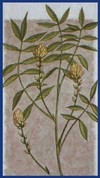Kenzo Flower : Fragrance Review
Star rating: 5 stars–outstanding/potential classic, 4 stars–very good, 3 stars–adequate, 2 stars–disappointing, 1 star–poor.
Kenzo Flower is an example of a well-crafted and unique fragrance, which is neither a hard-to-find niche nor a revered classic from the turn of the 20th century. Created by perfumer Alberto Morillas and launched in 2000, it still remains as one of top selling fragrance in Europe, along with marvels like Chanel No 5, Dior J’Adore, Chanel Coco Mademoiselle, Thierry Mugler Angel and CK One. Flower is a beautiful example displaying that an impressive sillage and tremendous lasting power do not have to conflict with a nuanced and delicate overall impression. In fact, throughout its development, Flower retains a soaring, radiant quality, which is quite unexpected in a floral oriental blend.

















Joi in Giorgio Armani Mania : Long Lost Favorite Perfume: Yes!! January 25, 2024 at 2:54am